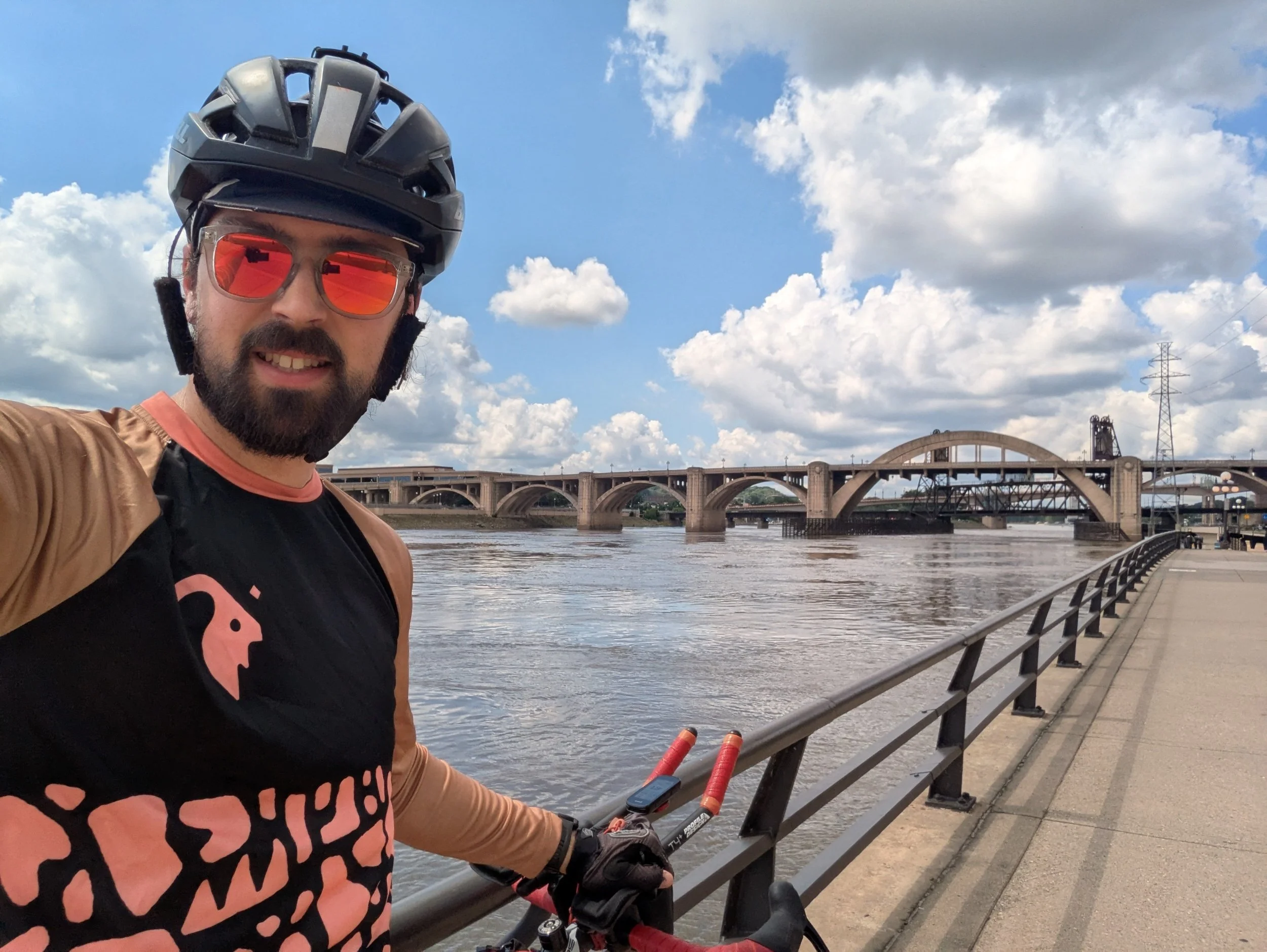Jay Cooke State Park, Munger Trail
Today I got out for a chilly road ride on beautiful Highway 210 through Jay Cooke State Park. Along the way I found and refound some neat spots.
Starting at the Willard Munger State Trail trailhead, I set out along the bike path for a few miles. The trail is very nicely paved, and a great spot for a casual ride, even roller ski! I’ve biked this trail end to end dozens of times for a past Memorial Day tradition, but that’s a story for a different day.
I split off through Gary and New Duluth, with nice pavement and wide shoulders, until reaching the St Louis River at Boyscout Landing. The St Louis River is a wide estuary at this junction where it flows into Lake Superior, and has played a major role in connecting the Mississippi watershed to Lake Superior, though further upstream you'll see how deep it cuts into the bedrock, necessitating a Grand Portage for early Native American and European canoe travellers. From here on out, road traffic became much sparser, especially on a chilly weekday.
Further along was the neighborhood of Fond du Lac (French for Bottom of the Lake). Ojibwe have settled in this area since at least the 16th century. Later, in 1817, the American Fur Company established a trading post. Two early treaties with the Ojibwe people, the 1827 and 1846 Treaty of Fond Du Lac, were signed at the site, ceding mineral rights, then land rights, predating the establishment of the reservations that remain today. If you ride this route, you'll notice a long stretch of partially completed road work. In 2017, MNDOT was constructing a bridge and disturbed an Ojibwe burial site. In accordance to law, the work was halted. A new cemetery, has since been created, and the conversation around this and similar desecrations of Native American sites continues.
Disclaimer, I am not a historian, just an interested cyclist. If you are curious, like me, continue to seek out more sources of information. I aim only to plant a seed and start that journey, while sharing the information I find about the places I ride through.
Fond du Lac was incorporated in 1857 and became a part of the City of Duluth in 1895. This is the site of a major Chippewa Indian settlement from the sixteenth through the nineteenth centuries and is situated on the early canoe route along the St. Louis River from Lake Superior to Lake Vermillion and the Upper Mississippi. Daniel Graysolon, Sieur du Lhut, visited the site in 1679. The American Fur Company established a trading post in 1817. Louis Cass camped here in 1820 while searching for the source of the Mississippi River, as did Henry R. Schoolcraft in 1826. The Chippewa Indian Treaty, negotiated by Cass, was signed at Fond du Lac in 1826. A branch of the Superior-St. Paul Military Road was built to Fond du Lac about 1856, and the first railroad to reach Duluth – the Lake Superior and Mississippi – was constructed through the settlement in 1870.
Nagaajiwanaang means “the place where the water flows down and stops” in ojibwemowin
After passing Chambers Grove Park the road turned upwards for the hilly and gorgeous State Highway 210. This road used to be a feature of road group rides and even races back in the roadie heydays. It is still a gem worth riding. The hills are of moderate length, the rolling terrain keeps you engaged, and the scenery, especially where the view opens up on the St Louis River, is second to none.
The highway passes through Jay Cooke State Park. The park land was donated in 1915, but only developed in 1933 with the establishment of a Civilian Conservation Corps (CCC) Camp, which constructed the famous swinging bridge over the river gorge. In 2012 the bridge was destroyed in a major flood, but it was repaired before the 100 year anniversary of the park. There is plenty of other recreation to be had in the park in any season. Phenomenal hiking trails, top class campground, and plenty of Northern MN’s best flora and fauna (Look for Lady Slippers in late June!)
Once I arrived to the small town of Thompson, I turned back onto Willard Munger State Trail. Originally part of the St Paul and Duluth Railroad, you will get mild grades and this section is especially scenic as it passes between boreal forest, through rock cuts from the railroad, and opens into views of the St Louis River Estuary. The trail took me back to my car to finish today's ride.







